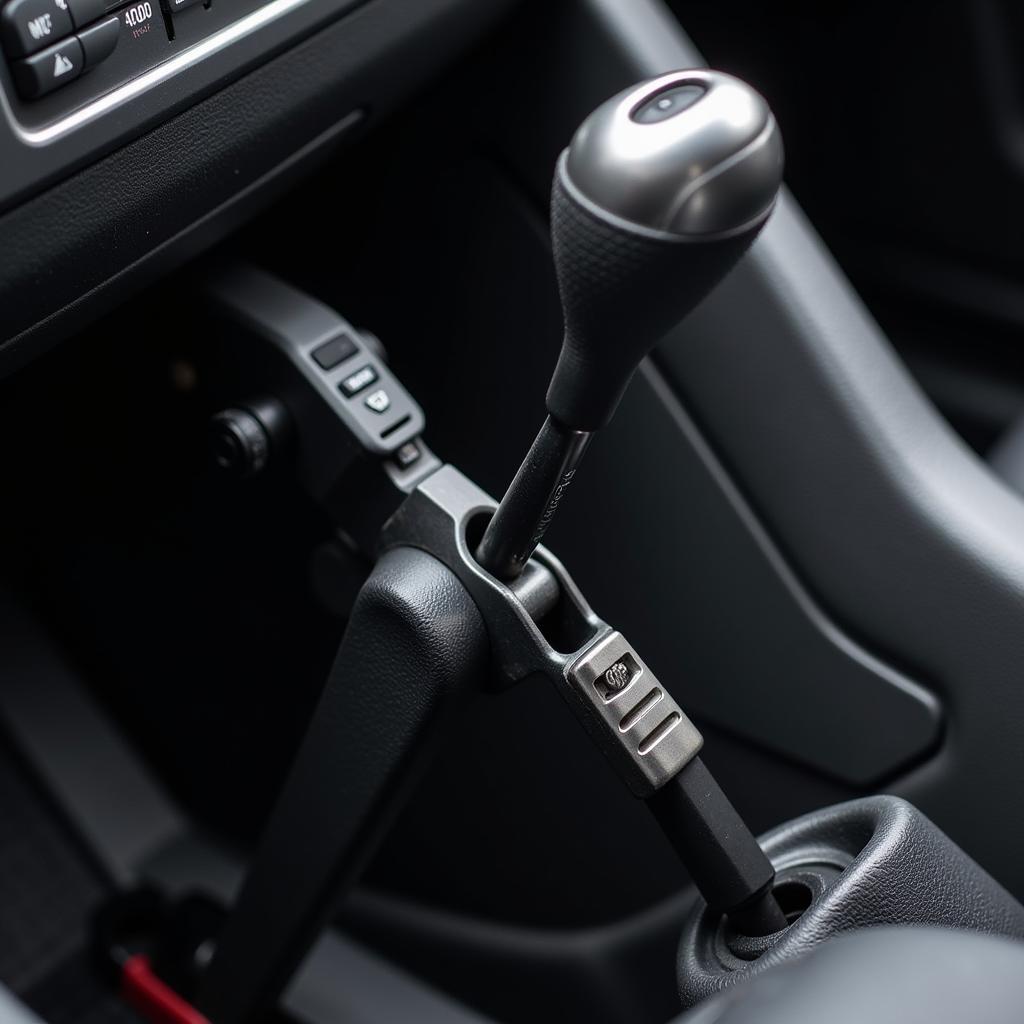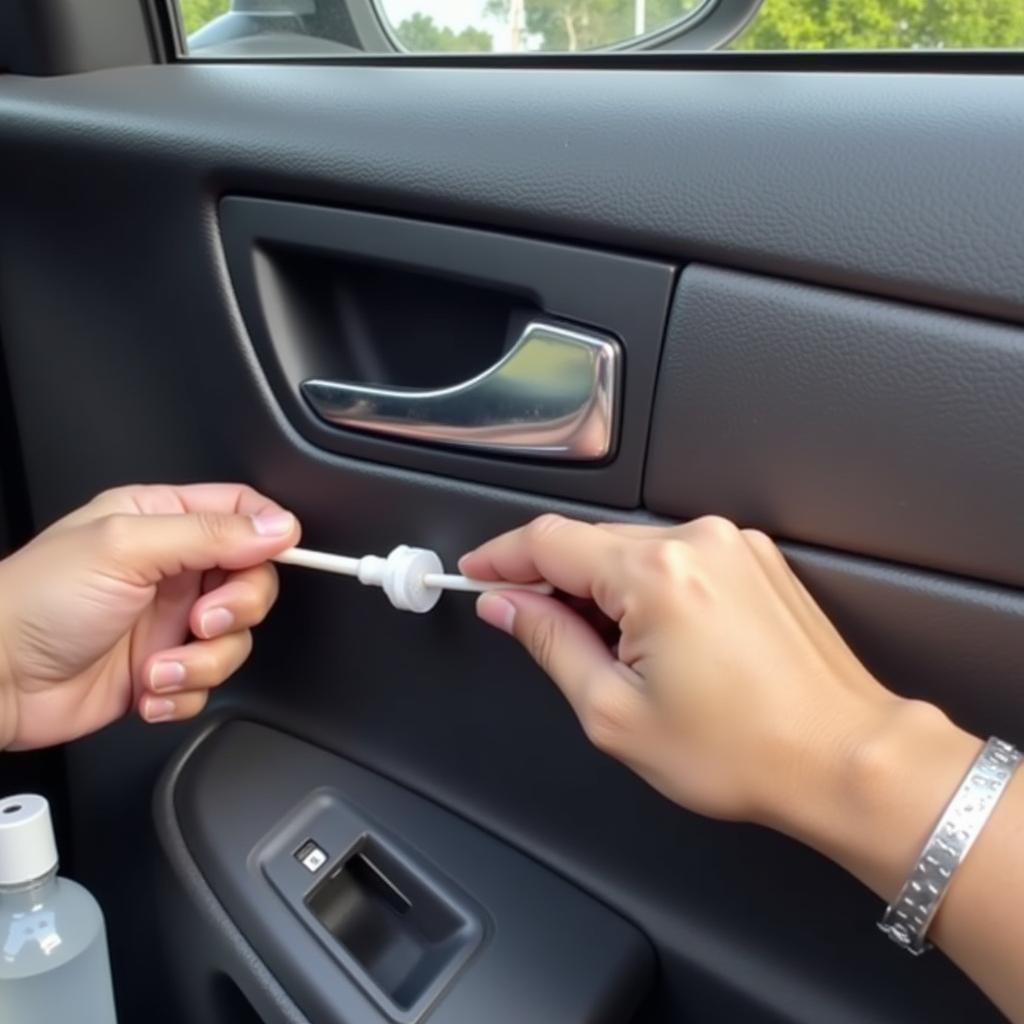A cracked cylinder head is a serious engine problem that can lead to costly repairs. If you suspect your car has a cracked head, it’s crucial to address the issue promptly. This article will guide you through the causes, symptoms, diagnosis, and solutions for How Do You Fix A Cracked Head On A Car. After reading this, you’ll be well-equipped to understand this challenging automotive issue. You can find helpful information about other car repairs such as fixing a car coolant leak at our car coolant leak fix guide.
Understanding the Severity of a Cracked Cylinder Head
A cracked head isn’t just a minor inconvenience; it’s a major engine problem that can lead to catastrophic failure if left untreated. It disrupts the engine’s combustion process, causing leaks and performance issues. The cylinder head, responsible for containing the combustion chambers and various vital components, can crack due to overheating, extreme temperature fluctuations, or manufacturing defects.
Common Symptoms of a Cracked Head
How can you tell if your car has a cracked head? Several key symptoms can point towards this issue:
- White exhaust smoke: This can indicate coolant leaking into the cylinders.
- Overheating: A cracked head can disrupt coolant flow, leading to engine overheating.
- Coolant loss: Without a visible external leak, coolant loss might indicate a leak into the cylinders.
- Milky oil: Coolant mixing with oil creates a milky, frothy substance on the dipstick.
- Rough idling or misfiring: Compression loss due to a cracked head can cause these performance problems.
Diagnosing a Cracked Cylinder Head
Diagnosing a cracked head requires a systematic approach. Several methods can confirm the issue:
- Pressure test: This tests the cooling system for leaks and can pinpoint a leak in the cylinder head.
- Leak-down test: This test checks for compression loss in the cylinders, indicating a potential crack.
- Chemical test: A special block tester can detect combustion gases in the coolant, confirming a cracked head.
- Visual inspection: In some cases, a visible crack can be seen upon removing the cylinder head.
How Do You Fix a Cracked Head on a Car: Repair vs. Replacement
Once diagnosed, you have two main options: repair or replace. Repairing involves sealing the crack with a specialized sealant or welding, while replacing involves installing a new cylinder head. The best option depends on the severity of the crack, the type of engine, and the overall cost. If you’re interested in fixing other leaks in your car like a roof leak check our guide on how to fix leak in car roof.
Repairing a Cracked Cylinder Head
Repairing is a less expensive option, but it’s only suitable for small cracks and certain engine types. It might not be a permanent solution, especially for larger or more complex cracks.
Replacing a Cracked Cylinder Head
Replacing the cylinder head is often the recommended solution for serious cracks. While more expensive, it provides a long-term fix and ensures the engine’s proper functioning. You might find our article on fixing car door handles useful: how to fix outside door handle on car.
Preventing a Cracked Cylinder Head
Maintaining your car’s cooling system and addressing overheating issues promptly can significantly reduce the risk of a cracked head. Regular coolant flushes, thermostat checks, and radiator inspections are essential preventative measures. Here’s another useful article on fixing vacuum leaks: how to fix a vacume leak on a car.
Professional Help for a Cracked Head
Diagnosing and fixing a cracked head can be complex. Consulting a qualified mechanic is crucial for accurate diagnosis and proper repair. Don’t hesitate to seek professional assistance if you suspect a cracked head in your car. Another useful article related to car maintenance is: the hero the fixer lip care.
“A cracked cylinder head is not something to ignore. Early detection and proper repair are crucial to preventing further engine damage,” advises John Miller, a seasoned automotive engineer with over 20 years of experience.
“Regular maintenance and addressing overheating issues promptly are the best ways to prevent a cracked head in the first place,” adds Sarah Johnson, a certified mechanic specializing in engine diagnostics.
Conclusion: Addressing a Cracked Head Effectively
Knowing how do you fix a cracked head on a car is essential for every car owner. This problem demands immediate attention. From understanding the symptoms to choosing the right repair strategy, taking proactive steps will save you time and money in the long run. For any further assistance or queries, feel free to connect with us at AutoTipPro. Call us at +1 (641) 206-8880 or visit our office at 500 N St Mary’s St, San Antonio, TX 78205, United States.
“Don’t underestimate the importance of a professional diagnosis. A qualified mechanic can accurately assess the damage and recommend the best course of action,” concludes David Smith, a leading expert in automotive repair.
FAQ
-
Can a cracked head be repaired without removing the head? In some cases, minor cracks can be repaired with sealants without removing the head, but this is not a guaranteed solution.
-
How much does it cost to fix a cracked head? The cost varies depending on the severity of the crack, the type of engine, and labor rates. It can range from a few hundred dollars for minor repairs to several thousand dollars for head replacement.
-
Can I drive with a cracked head? Driving with a cracked head can cause further damage and lead to catastrophic engine failure. It’s crucial to address the issue immediately.
-
How long does it take to fix a cracked head? The repair time depends on the chosen solution and the complexity of the job. It can range from a few hours for minor repairs to a few days for head replacement.
-
What causes a cracked head? Overheating, extreme temperature fluctuations, and manufacturing defects are the most common causes of a cracked head.
-
Can a cracked head be prevented? Regular maintenance, prompt attention to overheating, and using the correct coolant type can help prevent a cracked head.
-
What are the signs of a cracked head gasket? Similar to a cracked head, a blown head gasket can cause white exhaust smoke, overheating, coolant loss, and milky oil.






Leave a Reply